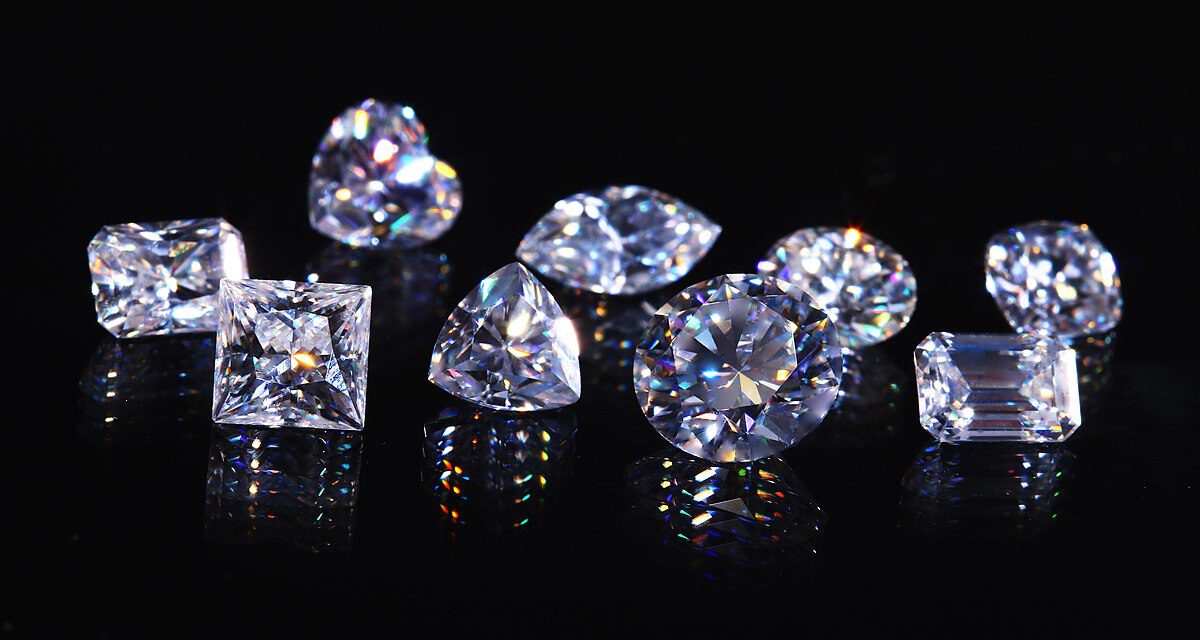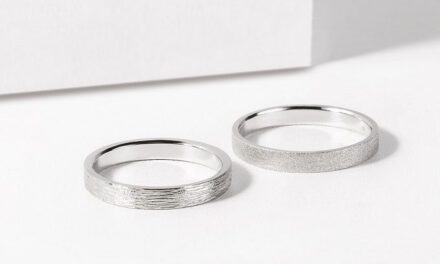What is Moissanite and where does it come from?
Moissanite is a naturally occurring mineral also known as silicon carbide, discovered by French scientist Henri Moissan in 1893. The discovery of Moissanite happened in Canyon Diablo, Arizona. Henri Moissan was there examining samples from a meteorite when he discovered a crystal, which he first identified as a diamond. In 1904 he identified this new crystal as silicon carbide. Henri Moissan later won the Nobel Prize in Chemistry. The new silicon carbide crystal was named “Moissanite” in his honour.
Eventually, silicon carbide was made in a lab by Charles & Colvard. As said before, natural Moissanite is extremely rare, so it’s no surprise that most of these crystals on the market are lab-made. It usually takes about 2-3 months to create a single Moissanite.

Moissanite vs diamond
Because of their appearance, Moissanite gems are very often mistaken for real diamonds, but they have many differences.
On the Mohs scale of hardness, Moissanite has the number 9.5 out of 10, making them perfect for everyday wear. Natural diamonds, on the other hand, are the hardest known mineral with the number 10, which makes them even more durable. Another difference is the weight. Moissanite is 15% lighter than diamond.
You can also tell apart these two crystals by their colour. A real diamond is mined in nature, and its colour can range from colorless diamond, white to yellow or grey. Classic Moissanite is colorless, and rare natural Moissanites can change from a clear to yellow colour. As said before, diamond is the hardest material found on Earth, Moissanite, on the other hand, is created in meteorites, so you won’t be able to find it on Earth. Lab-created Moissanites are colourless.
Moissanite shows an unusual brilliance than a diamond. Some say that particularly in sunlight, Moissanite can create a disco ball effect. Also, Moissanite has a refractive index from 2.65 to 2.69. That is higher than a diamond, so the optical properties differ.
Lastly, let’s compare the price of these crystals – Moissanite is much cheaper than a diamond. The price of natural diamonds or lab-grown diamonds is based on the cut, clarity and other important characteristics. And lab-created diamonds are usually cheaper than natural ones. Moissanites are usually sold for a reasonable price, which varies only based on the quality, shape and size of the crystal.
There is also a difference between Moissanite and cubic zirconia. Cubic zirconia tends to develop a cloudy “effect” over some time. On the other hand, Moissanite stays clear and colorless all the time.
Moissanite Jewellery
Moissanite jewelry varies in different shapes, such as pear, round, emerald, oval and cushion. Moissanite is usually combined with every type of gold – yellow gold, white gold and even rose gold. Moissanite engagement ring is usually cut in a round shape with gemstones, usually around the band, which gives it a luxurious look.
Moissanite eternity bands became very popular over the past few years because of their classic and expensive appearance. Choosing a Moissanite ring is an ideal and stunning ring if looking for a cheaper alternative to a diamond engagement ring due to its almost identical appearance and durability.
Moissanite stud earrings are usually seen in a classic round shape giving the wearer a simplistic but expensive look.






